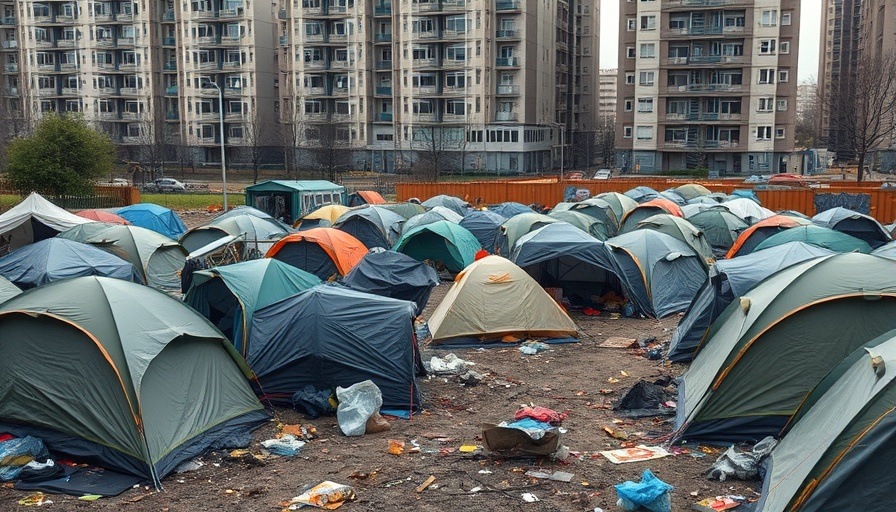
California's Homelessness Crisis: A Statewide Call for Action
California Governor Gavin Newsom has taken a decisive stand against the pervasive problem of homelessness in the state, urging local governments to enact bans on homeless encampments. This call to action follows a troubling increase in visible encampments that dominate urban landscapes, creating what many citizens perceive as significant public health and safety concerns.
The Blueprint for Addressing Homelessness in California
Governor Newsom's announcement included a comprehensive framework for local encampment bans, supported by a staggering $3 billion in funding directed towards facilities that assist individuals facing homelessness, mental health challenges, and substance use issues. At a news conference, he insisted, “No more excuses… it’s time to take back the streets.” His strategy sets a historical precedent as the first statewide move initiated by a Democratic governor, directing cities and counties to tackle what has long been a localized responsibility.
The Supreme Court's Influence on Local Policies
In light of recent changes made by the U.S. Supreme Court, which now supports cities in banning outdoor camping, governmental leaders are seeking to leverage this new judicial backing. While many politicians have welcomed the ruling, advocates express deep concern for the implications it holds for vulnerable populations. This divergence of perspectives highlights a serious ethical debate: Can new regulations coexist with the fundamental need for compassion towards those experiencing homelessness?
A Closer Look at Local Responses
San Francisco and San Jose represent just a few of the major Californian cities adopting heightened measures against encampments. Mayor Lurie of San Francisco has pledged to enhance city cleanliness, while Mayor Mahan of San Jose proposes the controversial approach of arresting individuals who refuse shelter after repeated offers. As a result, both cities are increasing the number of available shelter beds, aiming to provide genuine alternatives.
Challenges Ahead: The Reality on the Ground
Despite these actions, the challenges remain daunting. Los Angeles is witnessing a similar scenario, where Mayor Karen Bass emphasizes the urgency of clearing encampments. Yet, the visible reality of sagging tents and makeshift shelters persists, calling into question the effectiveness of these new policies.
Statistics Highlighting a Growing Crisis
California is home to approximately 187,000 homeless individuals, representing nearly a quarter of the entire U.S. homeless population. As the state grapples with housing shortages and rising costs, proposing effective resolutions becomes paramount. Newsom's public declarations, while politically powerful, must translate into tangible outcomes to genuinely alter the current trajectory.
Conclusion: A State Divided
California stands at a crossroads regarding its homelessness crisis. Newsom's initiative has energized some local leaders, yet the results in terms of policy effectiveness and the treatment of those affected by homelessness remain uncertain. As the situation evolves, the balance between enforcing regulations and upholding human dignity will play a crucial role in shaping California's future. Uniting local and state authorities can pave the way for robust solutions, but the path ahead still faces hurdles.
 Add Row
Add Row  Add
Add 




Write A Comment